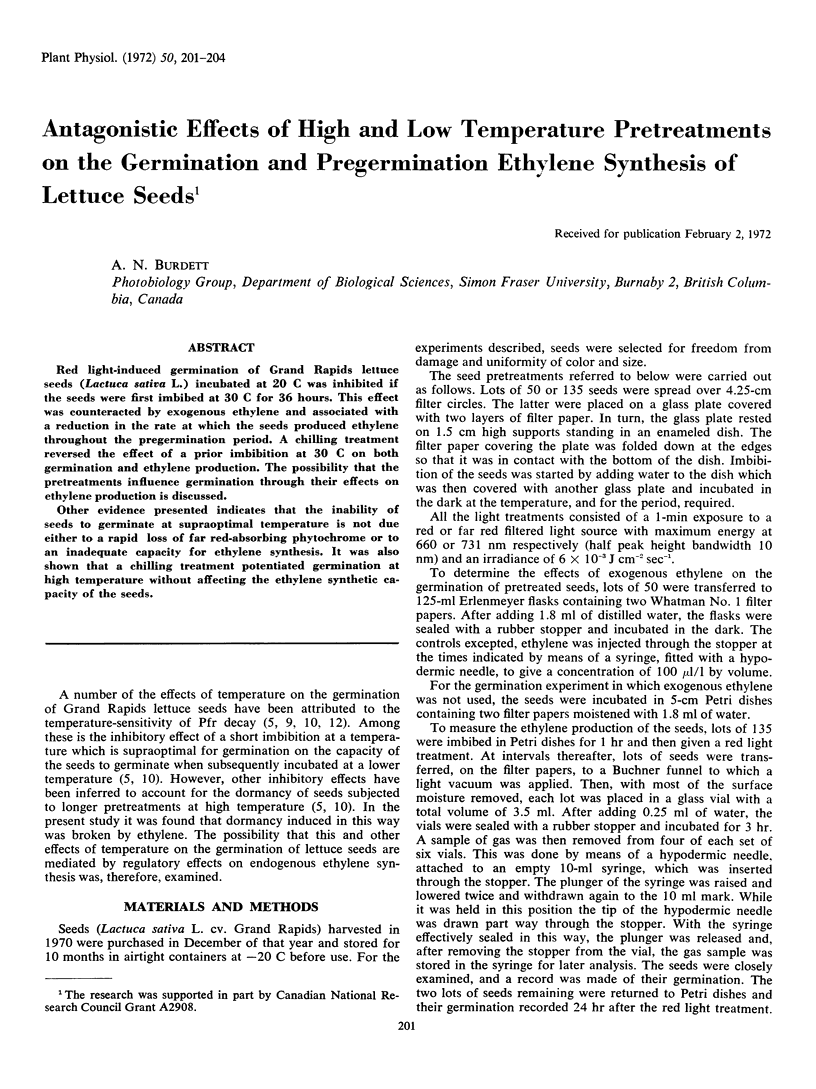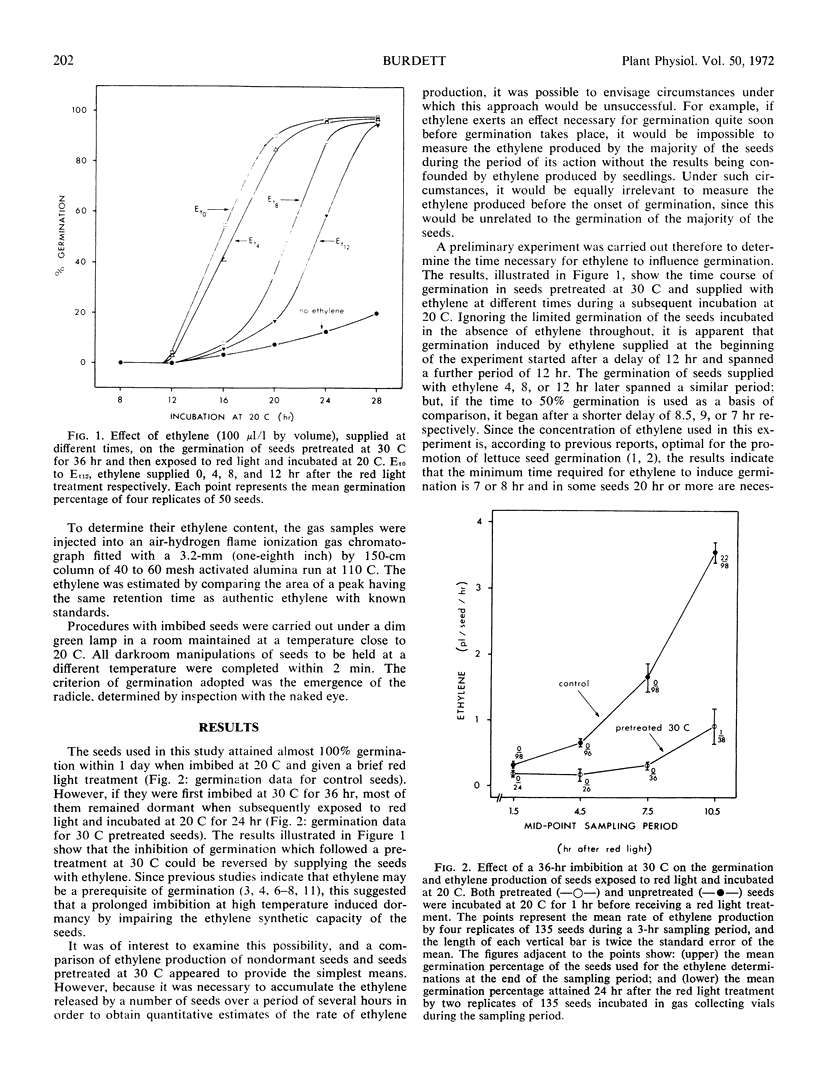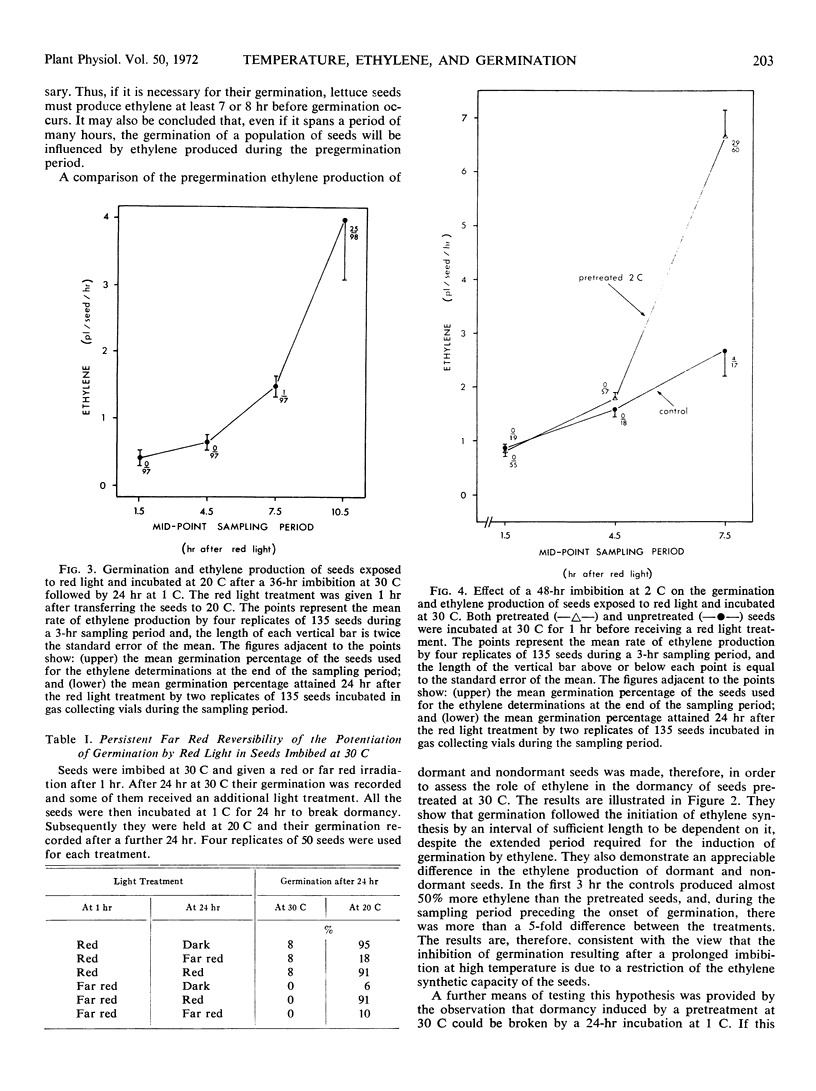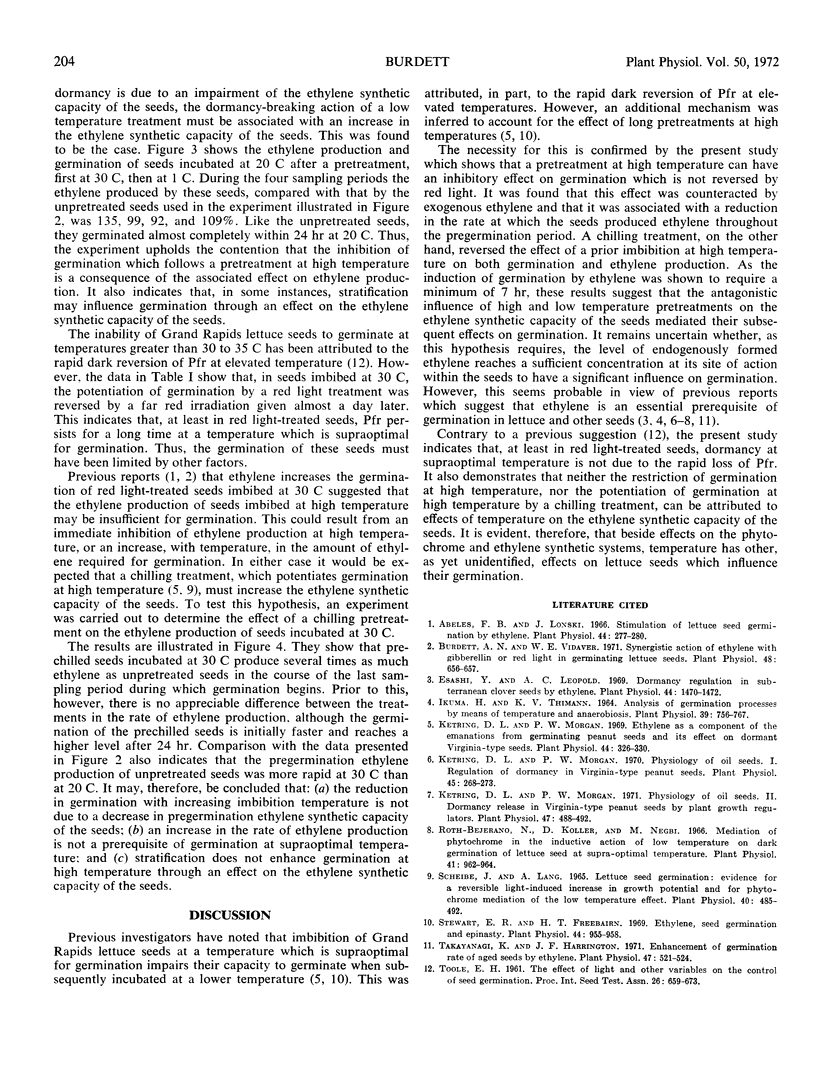Abstract
Red light-induced germination of Grand Rapids lettuce seeds (Lactuca sativa L.) incubated at 20 C was inhibited if the seeds were first imbibed at 30 C for 36 hours. This effect was counteracted by exogenous ethylene and associated with a reduction in the rate at which the seeds produced ethylene throughout the pregermination period. A chilling treatment reversed the effect of a prior imbibition at 30 C on both germination and ethylene production. The possibility that the pretreatments influence germination through their effects on ethylene production is discussed.
Other evidence presented indicates that the inability of seeds to germinate at supraoptimal temperature is not due either to a rapid loss of far red-absorbing phytochrome or to an inadequate capacity for ethylene synthesis. It was also shown that a chilling treatment potentiated germination at high temperature without affecting the ethylene synthetic capacity of the seeds.
Full text
PDF



Selected References
These references are in PubMed. This may not be the complete list of references from this article.
- Abeles F. B., Lonski J. Stimulation of lettuce seed germination by ethylene. Plant Physiol. 1969 Feb;44(2):277–280. doi: 10.1104/pp.44.2.277. [DOI] [PMC free article] [PubMed] [Google Scholar]
- Burdett A. N., Vidaver W. E. Synergistic action of ethylene with gibberellin or red light in germinating lettuce seeds. Plant Physiol. 1971 Nov;48(5):656–657. doi: 10.1104/pp.48.5.656. [DOI] [PMC free article] [PubMed] [Google Scholar]
- Esashi Y., Leopold A. C. Dormancy regulation in subterranean clover seeds by ethylene. Plant Physiol. 1969 Oct;44(10):1470–1472. doi: 10.1104/pp.44.10.1470. [DOI] [PMC free article] [PubMed] [Google Scholar]
- Ikuma H., Thimann K. V. Analysis of Germination Processes of Lettuce Seed by Means of Temperature and Anaerobiosis. Plant Physiol. 1964 Sep;39(5):756–767. doi: 10.1104/pp.39.5.756. [DOI] [PMC free article] [PubMed] [Google Scholar]
- Ketring D. L., Morgan P. W. Ethylene as a Component of the Emanations From Germinating Peanut Seeds and Its Effect on Dormant Virginia-type Seeds. Plant Physiol. 1969 Mar;44(3):326–330. doi: 10.1104/pp.44.3.326. [DOI] [PMC free article] [PubMed] [Google Scholar]
- Ketring D. L., Morgan P. W. Physiology of Oil Seeds: II. Dormancy Release in Virginia-type Peanut Seeds by Plant Growth Regulators. Plant Physiol. 1971 Apr;47(4):488–492. doi: 10.1104/pp.47.4.488. [DOI] [PMC free article] [PubMed] [Google Scholar]
- Ketring D. L., Morgan P. W. Physiology of oil seeds: I. Regulation of dormancy in virginia-type peanut seeds. Plant Physiol. 1970 Mar;45(3):268–272. doi: 10.1104/pp.45.3.268. [DOI] [PMC free article] [PubMed] [Google Scholar]
- Roth-Bejerano N., Koller D., Negbi M. Mediation of phytochrome in the inductive action of low temperature on dark germination of lettuce seed at supra-optimal temperature. Plant Physiol. 1966 Jun;41(6):962–964. doi: 10.1104/pp.41.6.962. [DOI] [PMC free article] [PubMed] [Google Scholar]
- Scheibe J., Lang A. Lettuce Seed Germination: Evidence for a Reversible Light-Induced Increase in Growth Potential and for Phytochrome Mediation of the Low Temperature Effect. Plant Physiol. 1965 May;40(3):485–492. doi: 10.1104/pp.40.3.485. [DOI] [PMC free article] [PubMed] [Google Scholar]
- Stewart E. R., Freebairn H. T. Ethylene, seed germination, and epinasty. Plant Physiol. 1969 Jul;44(7):955–958. doi: 10.1104/pp.44.7.955. [DOI] [PMC free article] [PubMed] [Google Scholar]
- Takayanagi K., Harrington J. F. Enhancement of germination rate of aged seeds by ethylene. Plant Physiol. 1971 Apr;47(4):521–524. doi: 10.1104/pp.47.4.521. [DOI] [PMC free article] [PubMed] [Google Scholar]


